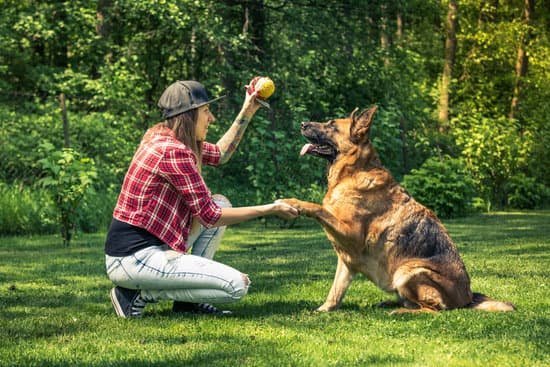Do I Have To Crate Train My Dog
?
The short answer is: no, you don’t have to crate train your dog. The long answer is: it depends.
Crate training is a popular way to train dogs, but it’s not the only way. Some people find it helpful, while others don’t. If you’re not sure whether crate training is right for you and your dog, here are some things to consider:
What is crate training?
Crate training is a method of training your dog to use a crate as a den. Dogs are instinctively drawn to crates, and many find them to be a cozy and safe place to rest. Crate training can be helpful for house training, preventing destructive behavior, and travel.
What are the benefits of crate training?
There are several benefits to crate training:
-House training: Dogs are more likely to eliminate in an area that they see as their territory. The crate can be used as a place to confine your dog when you can’t watch him, which will help him learn to eliminate outside.
-Preventing destructive behavior: Dogs may chew and destroy things when they’re bored or have nothing to do. The crate can provide a place for your dog to relax and play without damaging your belongings.
-Travel: A crate can be a safe place for your dog during travel. It can also help to keep him calm and safe in unfamiliar environments.
What are the disadvantages of crate training?
There are a few potential disadvantages to crate training:
-If your dog is confined to a crate for too long, he may become anxious or stressed. It’s important to make sure your dog has plenty of exercise and access to water when he’s crated.
-If your dog is uncomfortable in his crate, he may bark or whine. You may need to work on crate training slowly and patiently until your dog is comfortable.
-If you use the crate to punish your dog, he may associate the crate with negative feelings and become reluctant to enter it.
So, should you crate train your dog?
The answer to that question depends on your individual dog and your own preferences and goals. If you think crate training may be a good fit for you and your dog, talk to a trainer or behaviorist for more advice.
Crate Trained Dog Suddenly Barking At Night
The sudden and unexplained barking of a crate-trained dog at night can be a frustrating experience for any dog owner. While there can be many potential causes for this behavior, some of the most common ones include anxiety, boredom, and over-excitement.
If your dog is barking for no apparent reason, the first step is to rule out any medical issues that may be causing the behavior. Once you have ruled out any medical causes, the next step is to determine the root of the problem.
Anxiety is a common cause of nighttime barking, and can be caused by a variety of factors, including changes in routine, separation anxiety, and fear of loud noises. If your dog is barking due to anxiety, the best way to address the behavior is by working on behavior modification techniques, such as desensitization and counterconditioning.
Boredom can also be a common cause of nighttime barking, especially in dogs who are left alone for extended periods of time. If your dog is barking due to boredom, the best way to address the behavior is by providing him with plenty of exercise and stimulation.
Over-excitement can also be a cause of nighttime barking, especially in dogs who are not used to being crated. If your dog is barking due to over-excitement, the best way to address the behavior is by gradually acclimating him to the crate. Start by leaving the crate open and placing some of your dog’s favorite toys inside. Gradually increase the amount of time your dog spends in the crate, and praise him for calm behavior.
Dog Crate Training Benefits
Dog crate training is a popular and successful way to train dogs. When done properly, it can provide a number of benefits for both the dog and the owner. Some of these benefits include:
– Dogs that are crate trained are less likely to have accidents in the house.
– Crate trained dogs are less likely to chew on furniture or other items in the house.
– Dogs that are crate trained are less likely to bark or whine.
– Crate trained dogs are more likely to be relaxed and calm in the home.
– Crate training can help to housetrain a dog more quickly.
– Crate training can help to prevent dogs from developing bad behaviors, such as chewing on furniture.
– Crate training can help to make traveling with a dog easier and less stressful for both the dog and the owner.
– Crate training can help to make it easier to leave a dog home alone.
– Crate training can help to keep a dog safe when left home alone.
Divided Dog Crate For Potty Training
When potty training your dog, one of the most important things to keep in mind is that they should only have access to the bathroom when you are able to supervise them. This can be a bit of a challenge when you have to leave them alone for extended periods of time, but there is a solution – a divided dog crate!
A divided dog crate is essentially two crates in one. The front half is open for your dog to move around in, while the back half can be closed off to create a bathroom area. This allows your dog to have a designated potty space, even when you’re not able to directly supervise them.
There are a few different types of divided dog crates on the market, so you can choose the one that best suits your needs. Some crates have removable dividers, which makes it easy to adjust the size of the bathroom area as your dog grows. Others have built-in bathrooms, which can be helpful if you have a small home or limited space.
If you’re looking for a way to make potty training your dog a little bit easier, a divided dog crate is a great option. With a little bit of practice, your dog will be able to learn to use the bathroom in their crate, and you’ll be able to leave them alone for extended periods of time without worrying about accidents.
Crate Training Older Dog Housebreaking
a dog is a process that can take time and patience, but it’s worth it in the end. The most important part of housebreaking is to start early, when your dog is still a puppy. However, even an older dog can be trained to eliminate in specific areas of your home. The first step is to choose a spot in your home where you want your dog to eliminate. This can be a specific corner of a room, an area in the backyard, or even a designated crate. Once you’ve chosen a spot, start by putting your dog in the desired area every time it comes inside, and praising it when it eliminates there. If your dog doesn’t eliminate within a few minutes, take it outside to the desired spot and praise it when it goes. Be consistent with this routine, and eventually your dog will learn to eliminate in the desired spot only. If you’re traveling with your dog, always bring along a designated potty area, such as a travel crate with a pee pad, so your dog can eliminate in the same spot no matter where you are.

Welcome to the blog! I am a professional dog trainer and have been working with dogs for many years. In this blog, I will be discussing various topics related to dog training, including tips, tricks, and advice. I hope you find this information helpful and informative. Thanks for reading!





